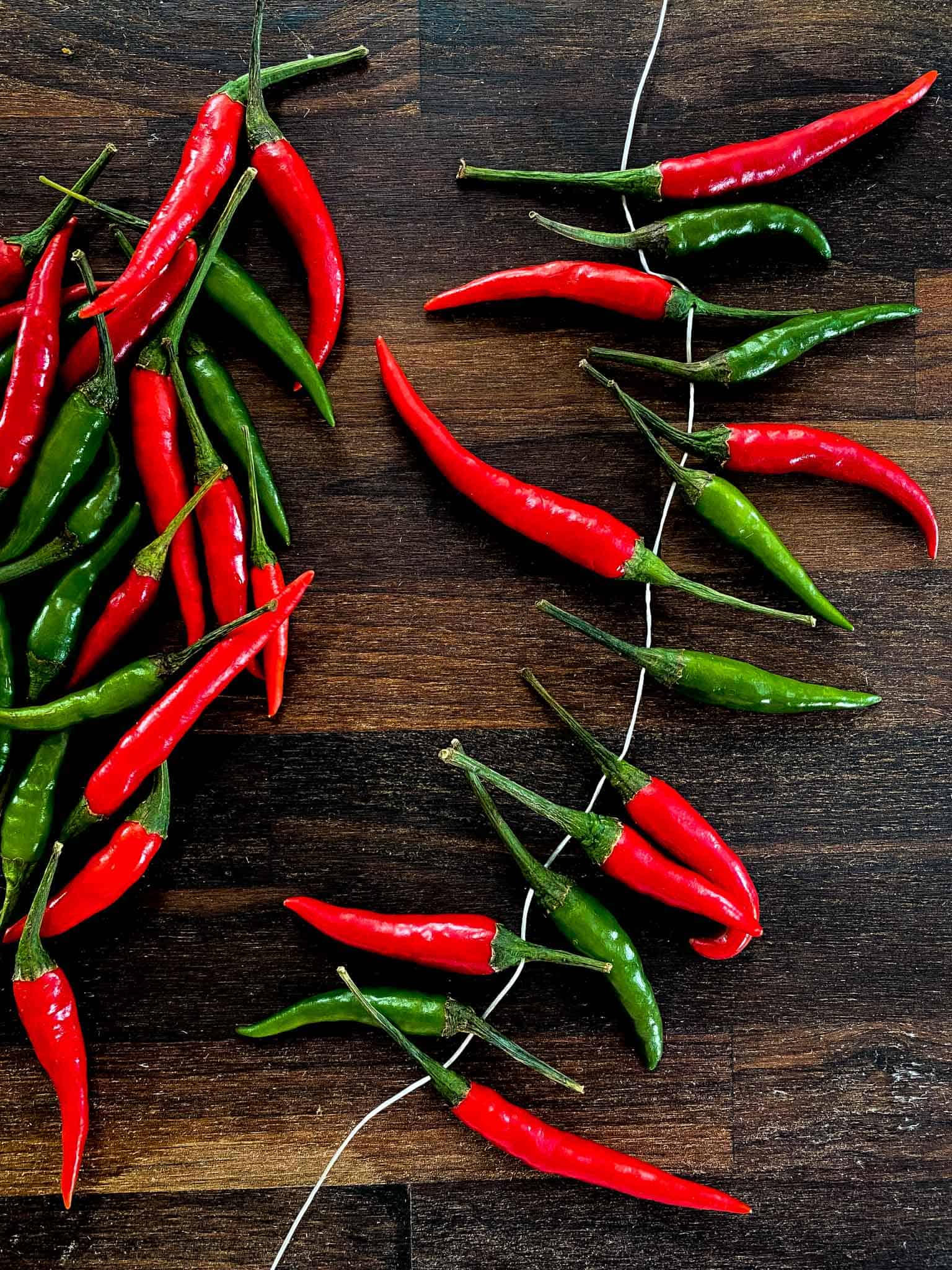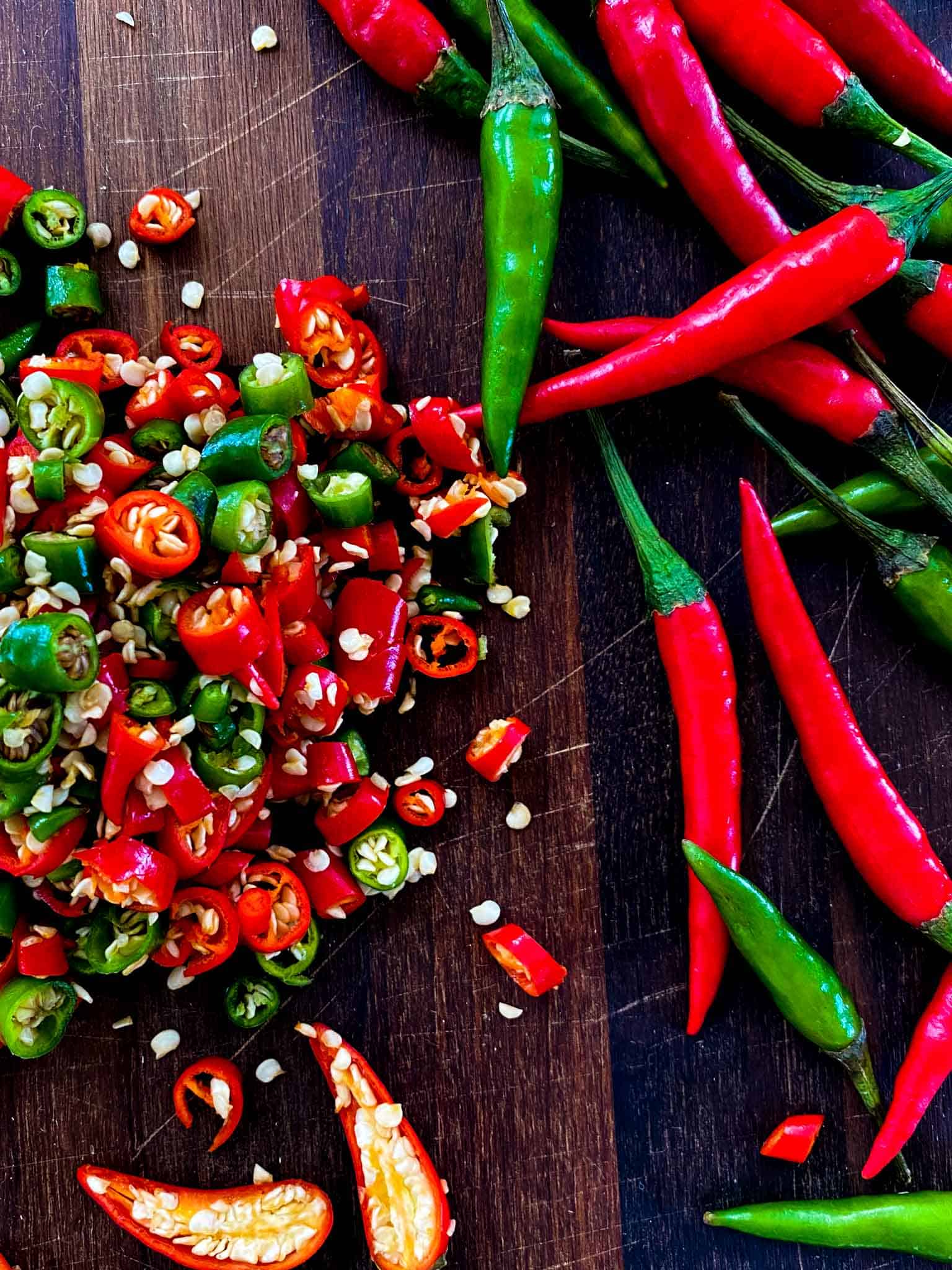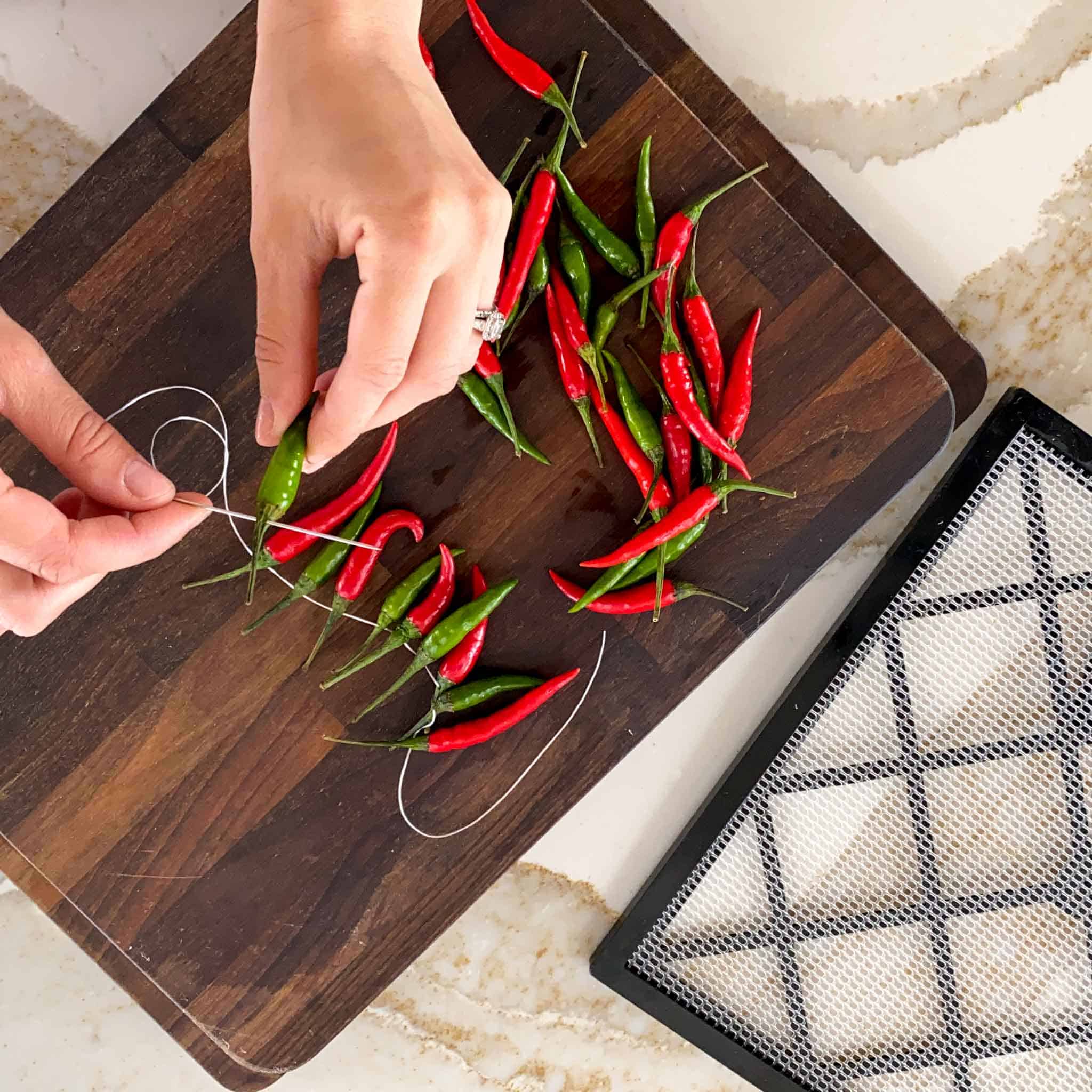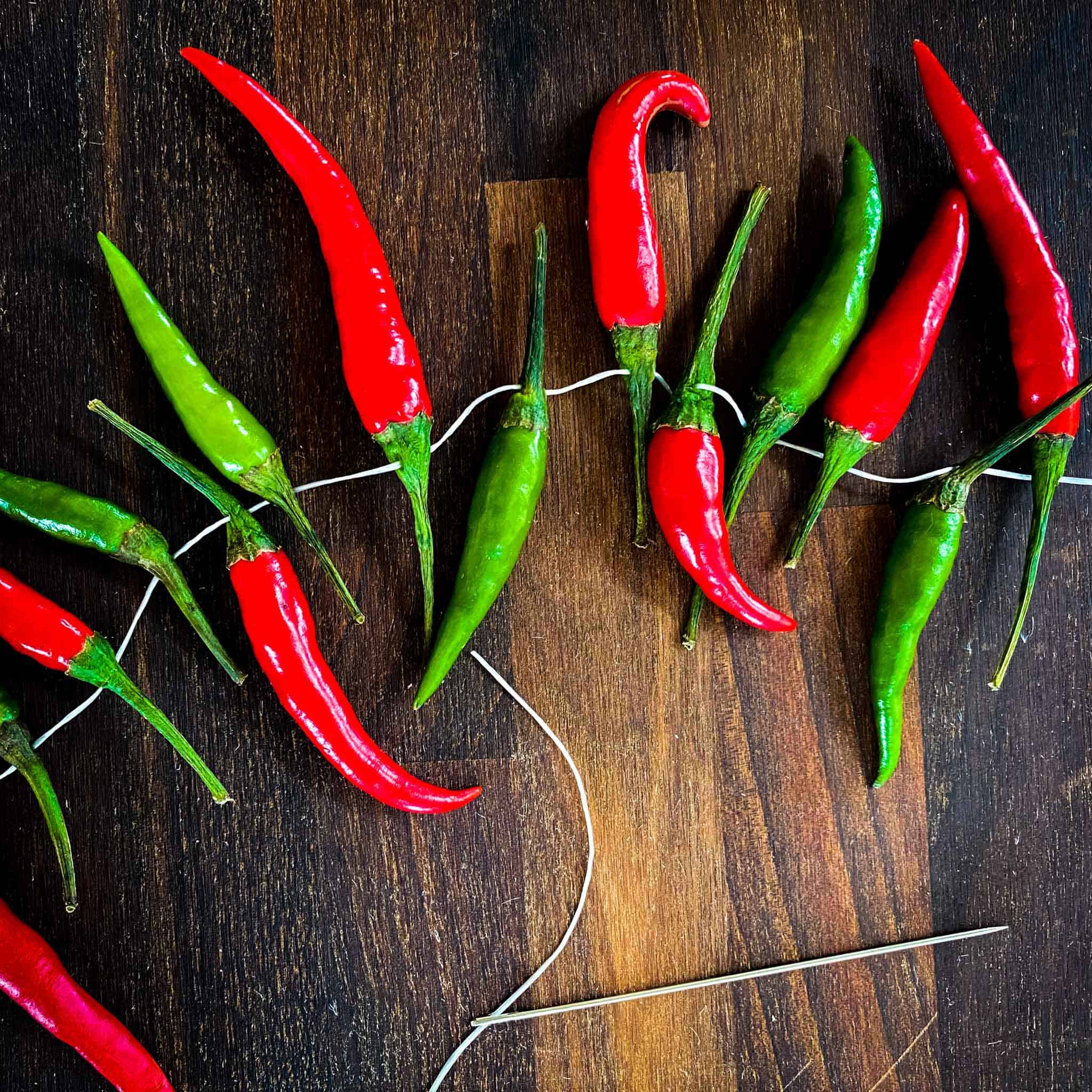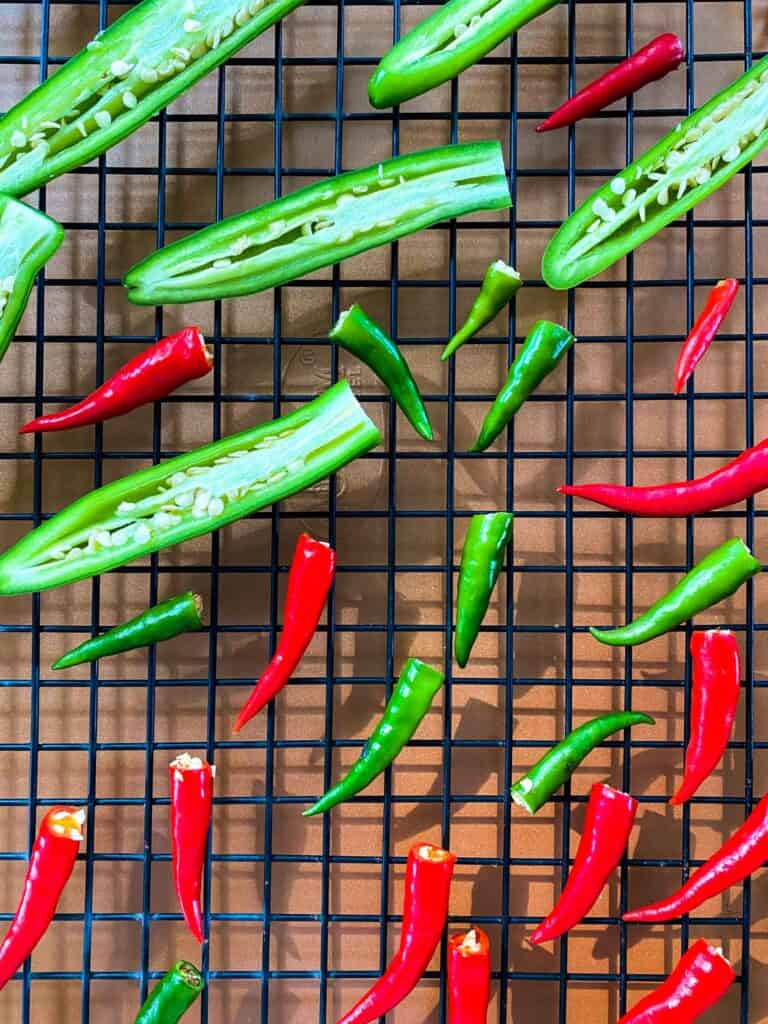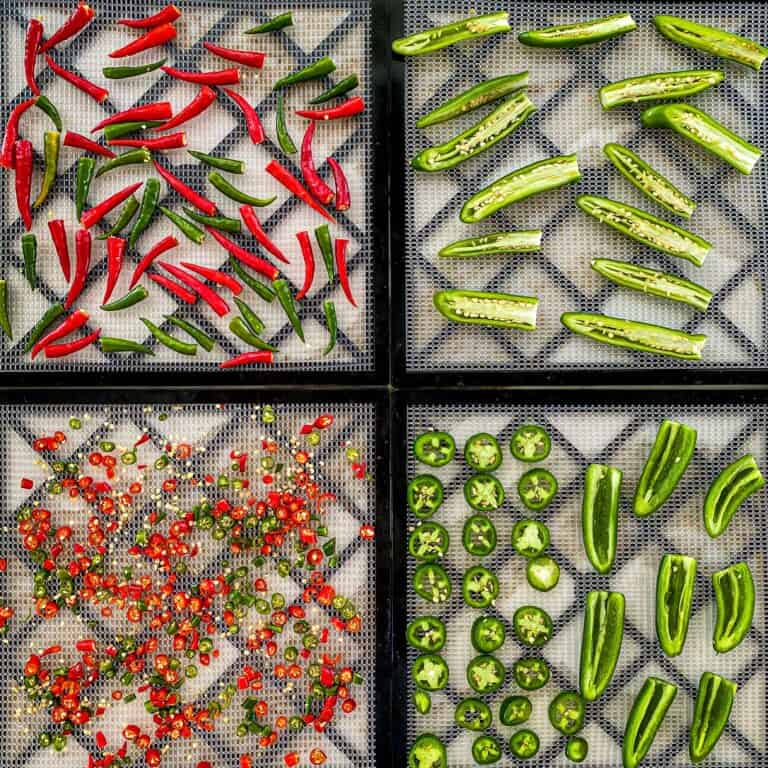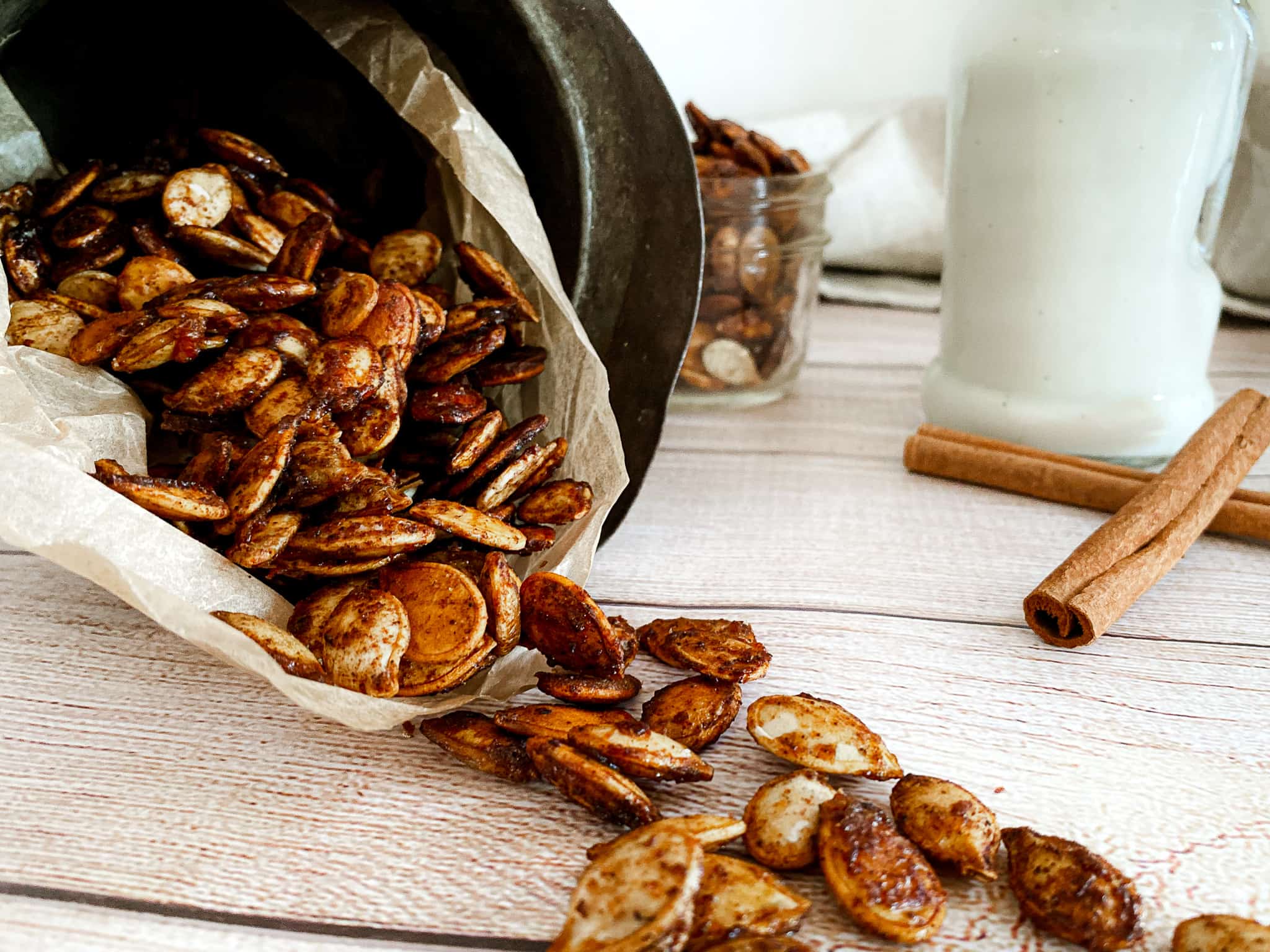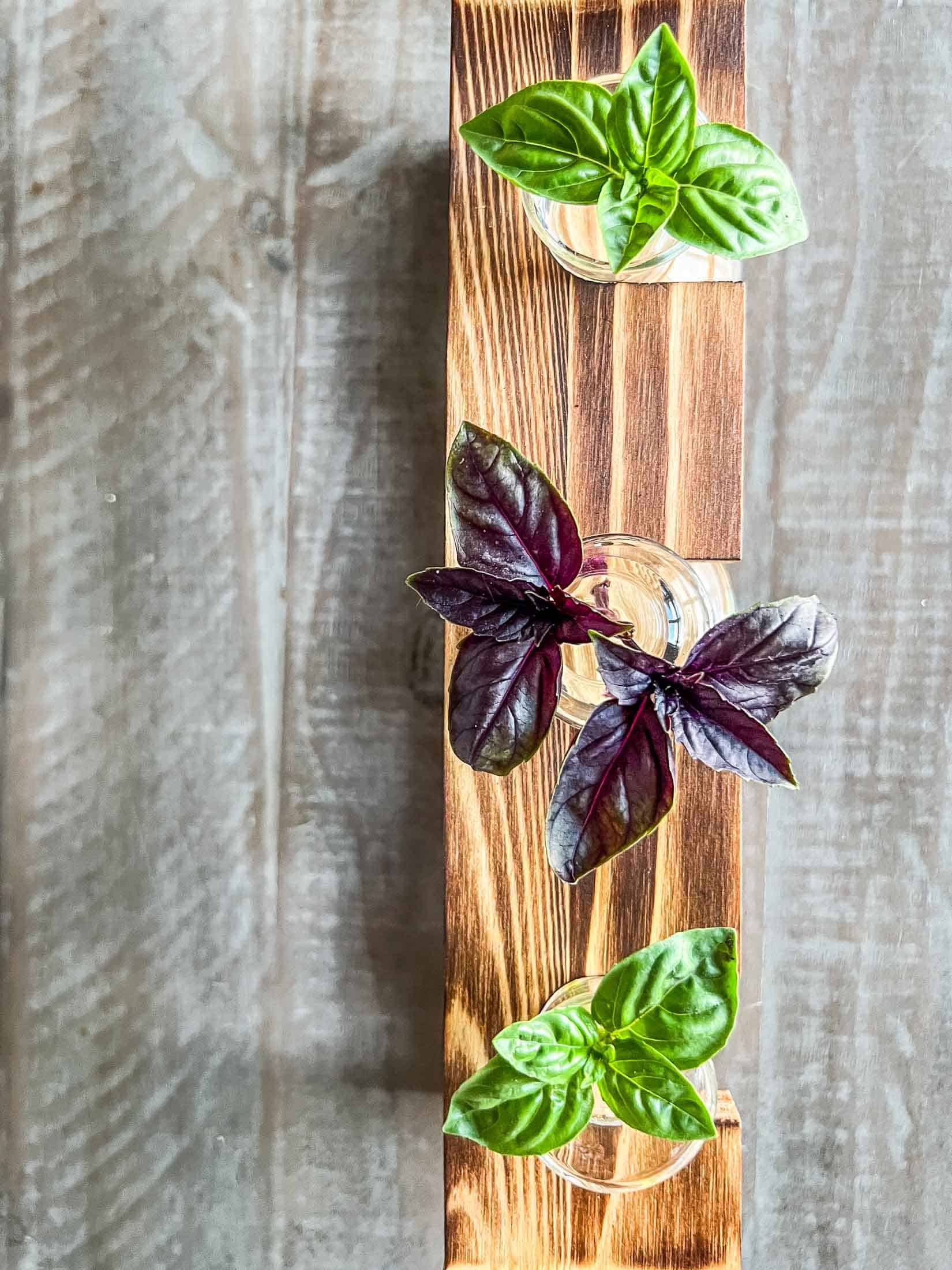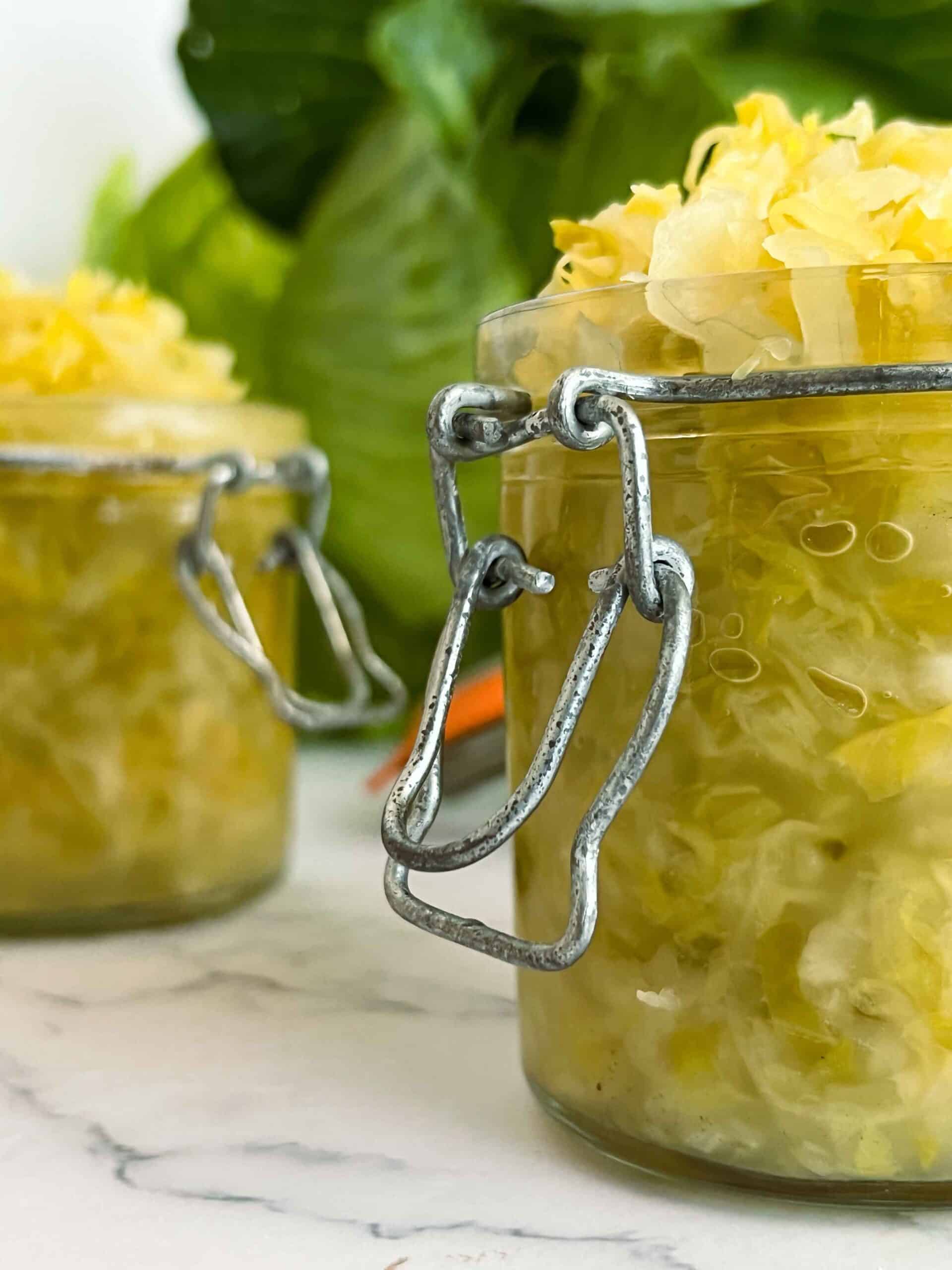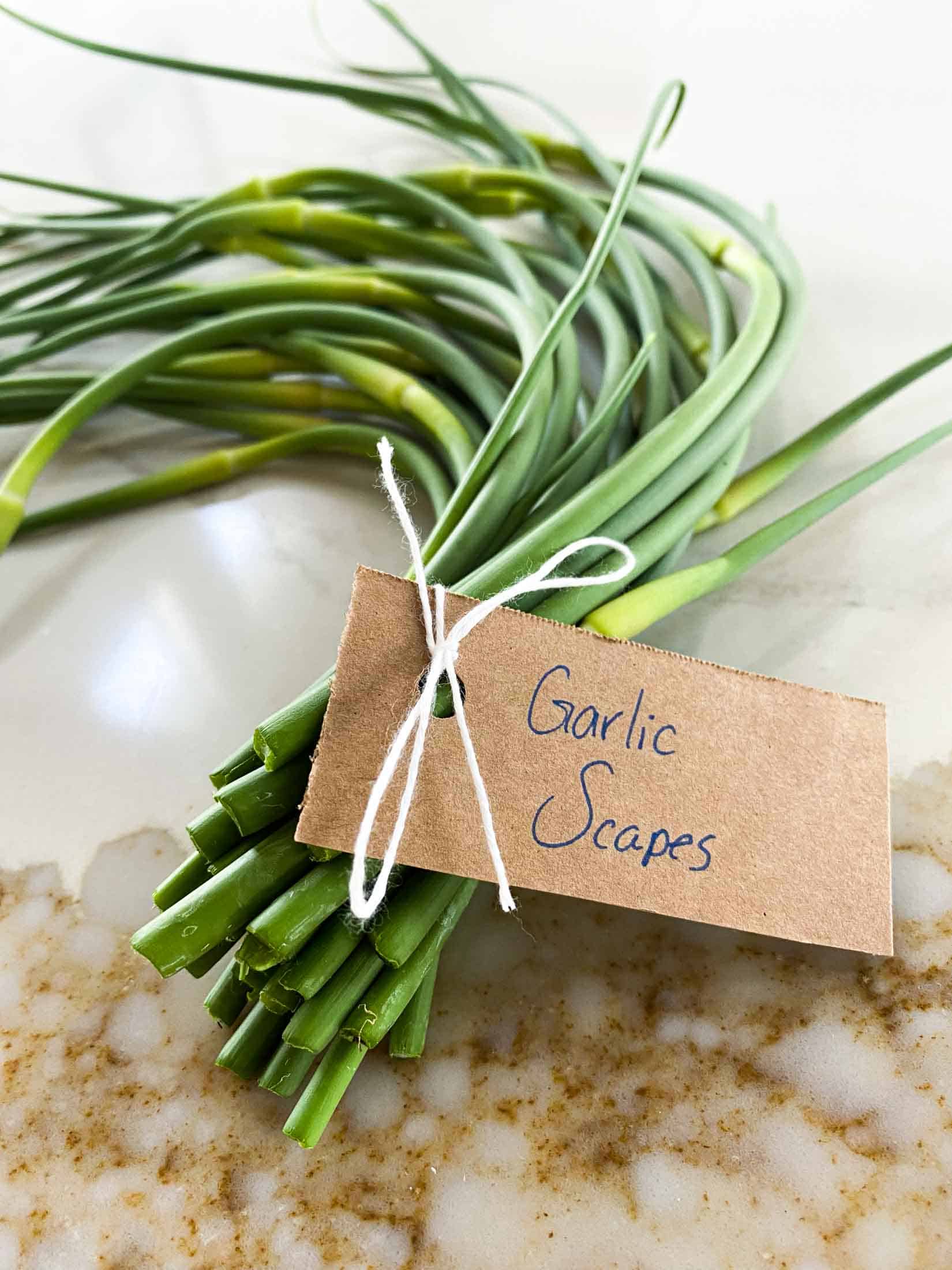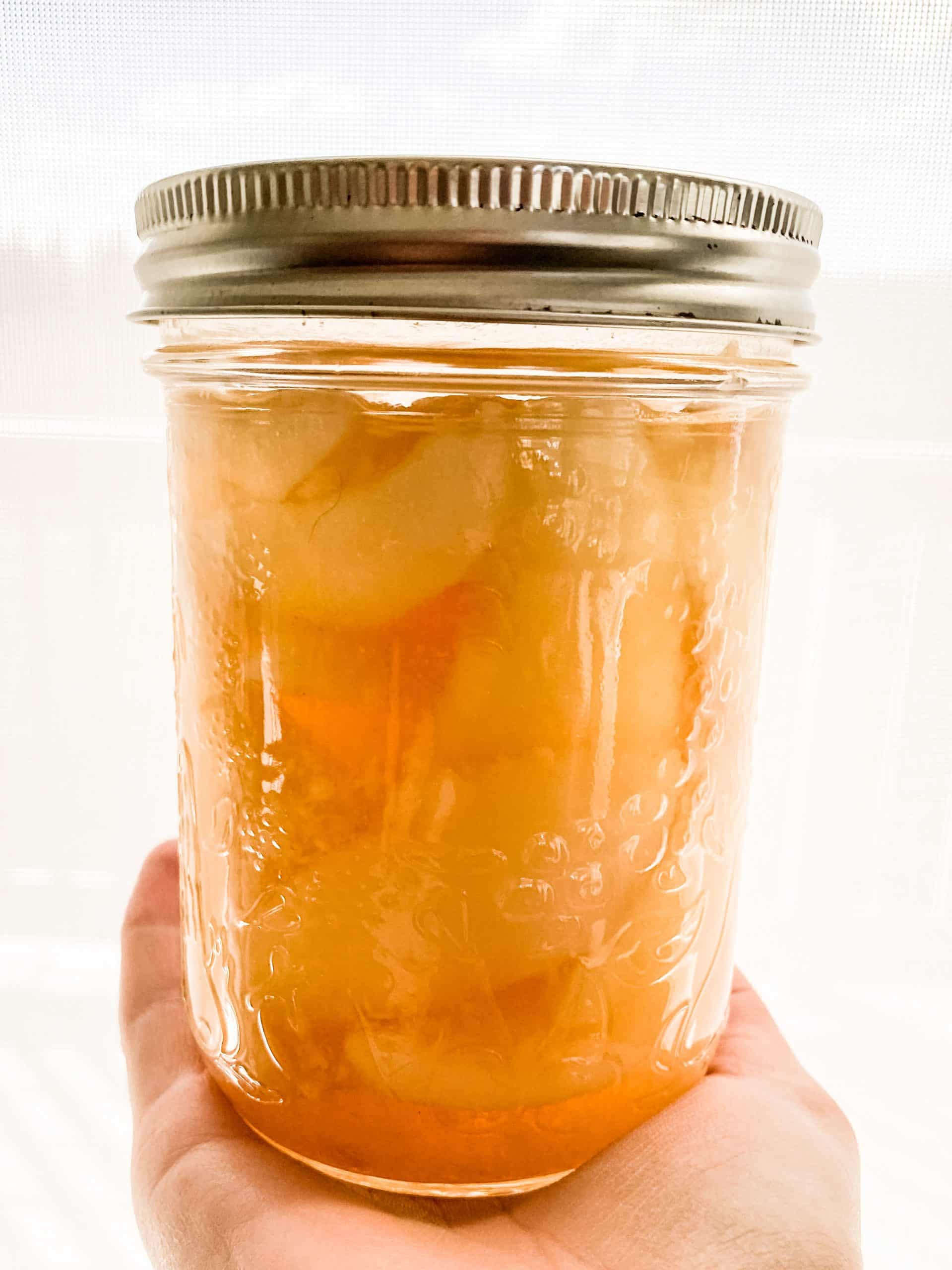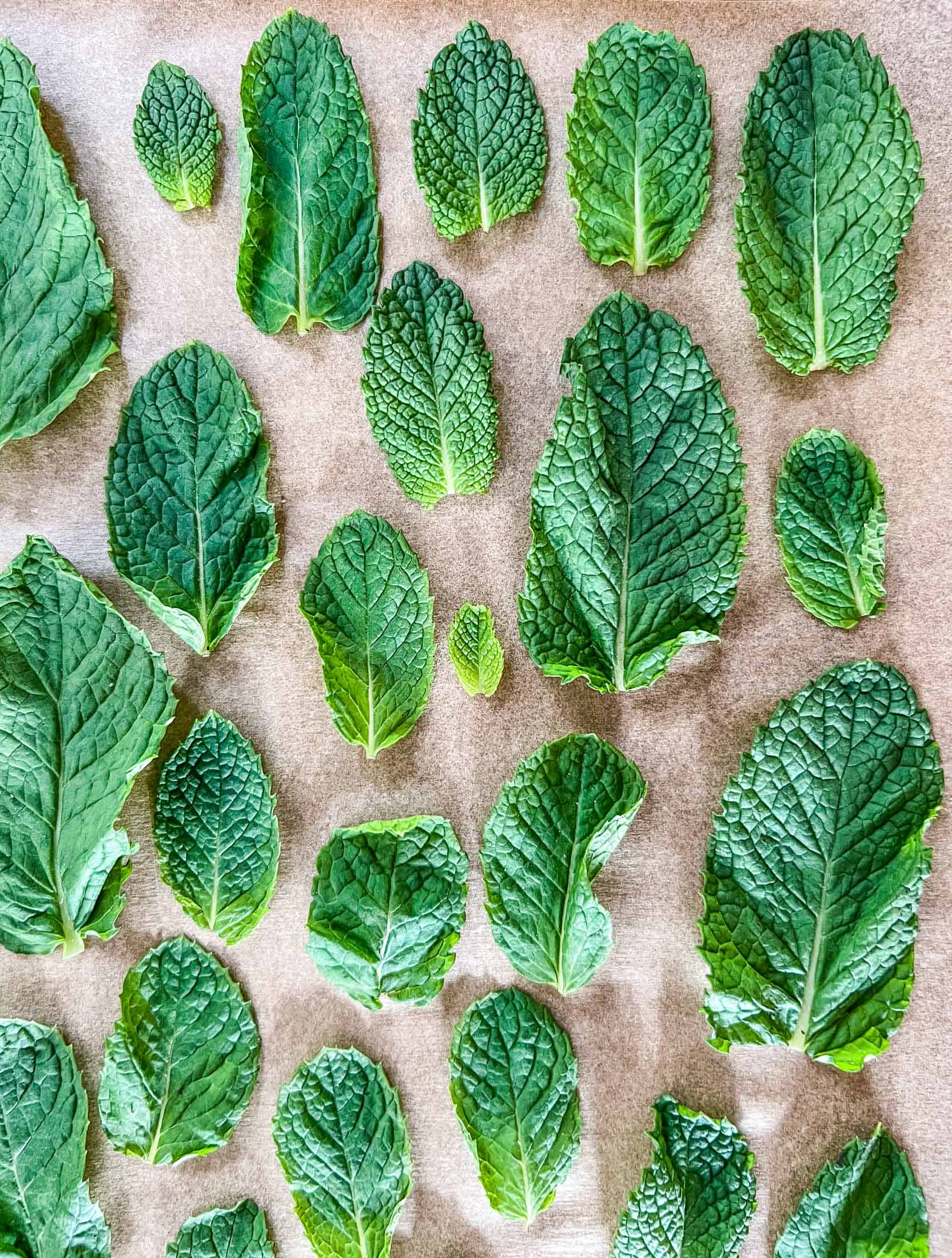How to Dry Peppers 3 Ways (With & Without a Dehydrator)
Whether you have a bumper crop of chili peppers from the garden or have stocked up at the local farmers market or grocery store, feel confident drying and preserving your peppers. Follow this guide to find out exactly how to dry peppers- either in a dehydrator, oven, or air drying. Learn different techniques to dry peppers and stretch your pepper bounty throughout the year!
Peppers are one of my favourite things to grow, they are also a real challenge in our short growing season! Every year my sister and I have a contest with our mom to see who will have the nicest peppers- and every year my mom puts us to shame. She inevitably ends up sharing her harvest and we all go about chopping, freezing, and drying chili peppers and bell peppers like mad women! This year I started my peppers under grow lights and revamped my greenhouse to hold more heat- stay tuned for *hopefully* my best pepper harvest yet!
If you love peppers and want to preserve their flavour and heat to enjoy them year round, drying them is a great option.
Why Dry Peppers?
When it is not possible to use up all of your fresh peppers or you are finding yourself needing quick grab and go portions, dried peppers are the answer! Drying chili peppers or sweet peppers is a great way to preserve your harvest and save you precious time down the road. Dehydrating peppers has been one of the main preservation methods used for centuries, taking less time and storage space than canning. Dried peppers can be buzzed in a coffee grinder or blender to make your own chili powder, crushed into flakes, used as garnish, or rehydrated in different dishes! Prepped and ready for any culinary adventure, dehydrated peppers can add a concentrated “kick” to any dish.
Best Types of Chili Peppers to Dry
Any and every pepper can be dried! Some work better than others depending on what you are planning on using them for. The following are some of my favourite chili peppers to grow and dry.
Jalapeno- Jalapeno peppers have a slightly hot popular flavor that is loved by many. If left on the plant to fully ripen, Jalapeno peppers will turn red and get slightly sweeter. Finely dice or cut your jalapenos into thin rounds and dry/dehydrate them. Grind up the dried jalapenos to make a fine powder that can be used to turn up the heat in your favourite dishes.
Habanero- Habanero peppers have awesome flavor with flesh and skin that can stand up to grilling and smoking. Habaneros are often smoked and put into chilli and other hot dishes. Dried habaneros rehydrate well and add great depth to any dish. Grind them up to make a spicy powder or finely dice to make chili pepper flakes.
Aji- Put these ornamental peppers to work! Mature Aji chili peppers are a beautiful orange colour and turn yellow when cooked. Dry your spicy aji peppers and pulverize them to make a powder that can be added to a variety of dishes or leave them whole to add a statement to your dish.
Aruba- Aruba peppers have mild heat with a hint of sweet. They are great for grilling, pickling, roasting and stuffing. Dice Arubas up and dry them to save prep time on busy week nights! Add dehydrated Aruba peppers to soups, sauces, and even breakfast scrambles.
Sweet Peppers- With the most bang for your buck, sweet peppers like bell peppers have a ton of delicious flesh that can be diced and dried. Sprinkle a handful of dehydrated sweet peppers into your spaghetti sauce, morning scramble, or lunchtime soup.
Get creative when drying your favourite type of peppers! Ghost peppers, poblano peppers, sweet peppers and everything in between can be dehydrated.
How To Dry Peppers Without a Dehydrator
Can I dry chili peppers without a dehydrator? YES! While a food dehydrator is convenient, there are other ways to dry your chili peppers and sweet peppers.
Air Drying Peppers
Air drying peppers works best in a dry environment above 85° F or 20° C. This method helps to maintain color, flavor and heat when preserving your chili peppers. Air drying peppers definitely takes time and patience (around 2-4 weeks) but it is a great option to preserve your harvest and looks beautiful hanging in the mean time.
- Thoroughly wash your peppers. You can air dry whole peppers or halve them.
- String the chili peppers using butchers twine or another fine string that you have on hand. Use a large needle and poke right through the top of the stem or you can tie a loop around each pepper stem. Make sure that you leave a space in between the peppers to promote airflow and more efficient drying.
- Hang the string of peppers in an area with sun and good airflow (not a closed off dark room)- think kitchen, greenhouse, clothesline etc..
- Check the peppers every couple of days, tightening knots if needed. Time to dry depends on the location of your peppers and how much sun and heat they are exposed to. Don’t rush, they need to be completely dry before stowing them away to prevent spoilage.
- Gently squeeze your peppers to feel for any moisture, they should feel dry and brittle. This can take up to four weeks in a more humid environment.
A drawback to air drying peppers like this is that they really should be left whole or in large pieces to be properly air dried. You can coarsely chop them after they are dried or transfer them to a food processor to make them finer. They also take a long time to dry fully at room temperature- if time is not on your side, you should use a different method. I like to dry my peppers in my greenhouse, using the solar heat to speed up the process.
Drying Peppers in The Oven
Drying peppers in the oven is a great option if you don’t have a dehydrator! This process takes considerably less time than air drying and it is easy to control the drying environment.
- Preheat the oven to around 140 degrees F if possible. If your oven temperature doesn’t go that low, the lowest possible setting will still work (you want to be sure to dehydrate and not bake them). Some ovens have “Proofing” settings, “Keep Warm,” or even “Dehydrate.” Low heat and slow is best!
- Prep the peppers. Choose unblemished peppers and thoroughly wash them in cold water. Wear gloves to protect your hands and either dice or cut the peppers in half lengthwise. Remove the seeds if you want a less spicy pepper or leave them for extra heat.
- Prepare your baking sheet by lining it with parchment paper. Place a metal rack inside the cookie sheet and arrange the peppers in a single layer (make sure that they aren’t touching) to allow airflow all around. If you don’t have wire racks, be sure to rotate the peppers every 30 minutes or so. I have grilling mats that can be placed directly onto my oven grates for drying peppers- they work awesome.
- Dry. Place the peppers in the oven for up to twelve hours to dry fully. Drying time depends on the size and thickness of the peppers that you are dehydrating. If possible, keep the oven door cracked open an inch or two to allow moisture to escape. Pepper skin should be crispy and crackly and not feel leathery at all once finished. Pulse in a food processor for a fine powder or store them diced or whole.
How To Dry Peppers With a Dehydrator
Drying Peppers in the Dehydrator
Using a dehydrator is my preferred method to dry chili peppers. I have an Excalibur dehydrator that I can set specifically for vegetables and it keeps them between 115°F and 130°F for the whole drying cycle. In my opinion, using a dehydrator to dry peppers is the easiest way…it is the “crock pot” of dehydration methods- set it and forget it!
- Prepare the chili peppers for the dehydrator by washing and chopping them into your desired size. I like to slice some like medallions if I am going to use them as a garnish and finely dice the rest to be pulverized into powder or rehydrated in soups, stews, and sauces.
- Spread the cut peppers overtop of the dehydrator sheets, being mindful to leave enough space around the pepper pieces for good airflow.
- Set the temperature of your dehydrator to 115°F and check them after 6-8 hours. Bigger pieces will take longer to dehydrate. I usually put them in the dehydrator overnight and check on them in the morning. Because the temperature of the dehydrator is so low, it won’t hurt them to stay in the dehydrator for a few extra hours.
- Process or pack them up as usual.
How to Store Dried Chili Peppers and Sweet Peppers
Dehydrated peppers have a shelf life of 1-2 years under ideal conditions.
It is important to store your hot peppers properly to maintain their flavor and texture and to prevent spoilage. Keep your peppers in an airtight container in a dark, cool space.
I love to store my dried peppers in mason jars or other glass jars- they are always handy and look beautiful in my pantry or on my cold room shelves. Alternately, you can vacuum seal them or keep them in a zippered bag with the air squeezed out! If you prefer, you can freeze your dried chili peppers in an airtight bag.
Frequently Asked Questions About Drying Chili Peppers
Leaving the seeds and membranes with your peppers during the drying process means that you will retain all of the heat that the peppers held. If you prefer a more mild dried pepper, simply remove part or all of the seeds and membranes.
No! See the above air drying and oven drying methods to dry chili peppers without a dehydrator. They are more timely in some cases but will still allow you to preserve and dry your peppers with ease.
This all depends on the method that you are using! Small pieces with ample airflow and a little bit of sunshine or heat in a dry environment will dry faster than larger pieces in a more humid environment. Space your peppers out and make sure that they are turned or rotated regularly for quicker results.
When chilli peppers or sweet peppers are fully dried, they should feel crispy, crackly, and not easily bent. If the peppers feel moist or leathery at all, they need to be dried for longer. Your goal is to have a fully dried flesh that won’t mold when put into storage.
Dehydrated peppers will last long term 1-2 years if dehydrated properly and stored in a cool dark space in an airtight container.


